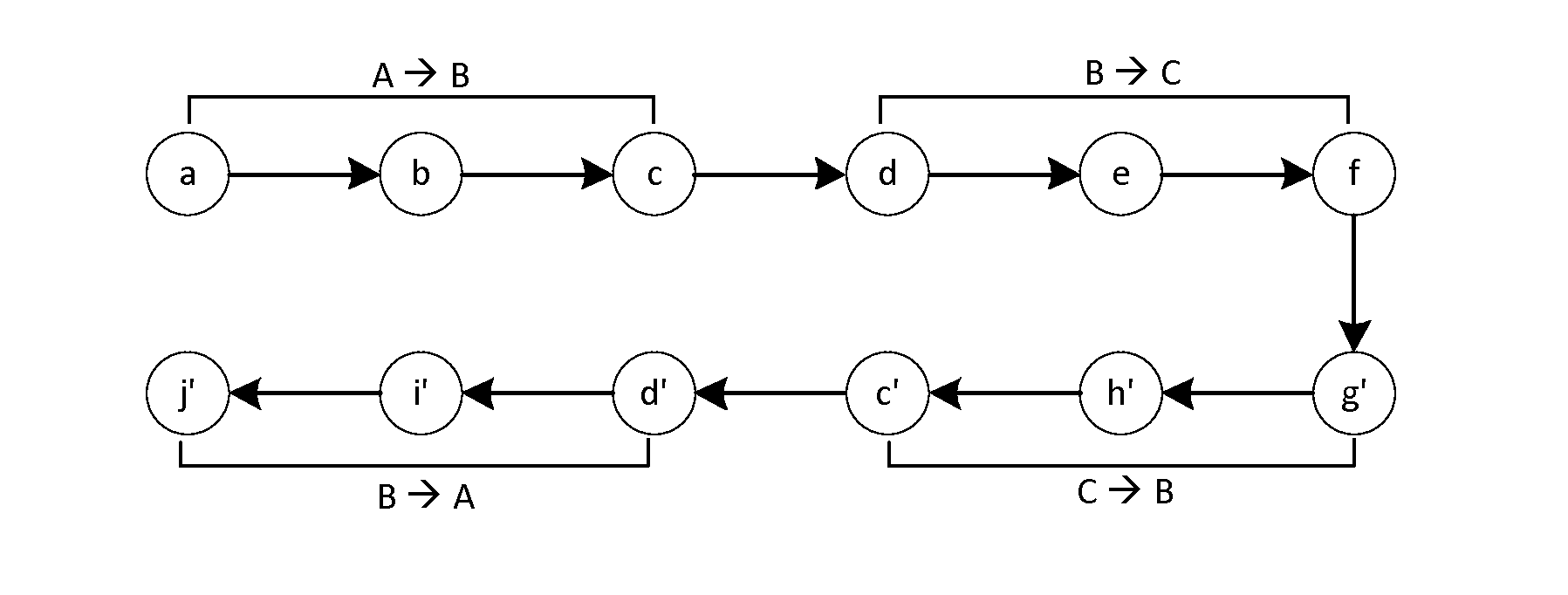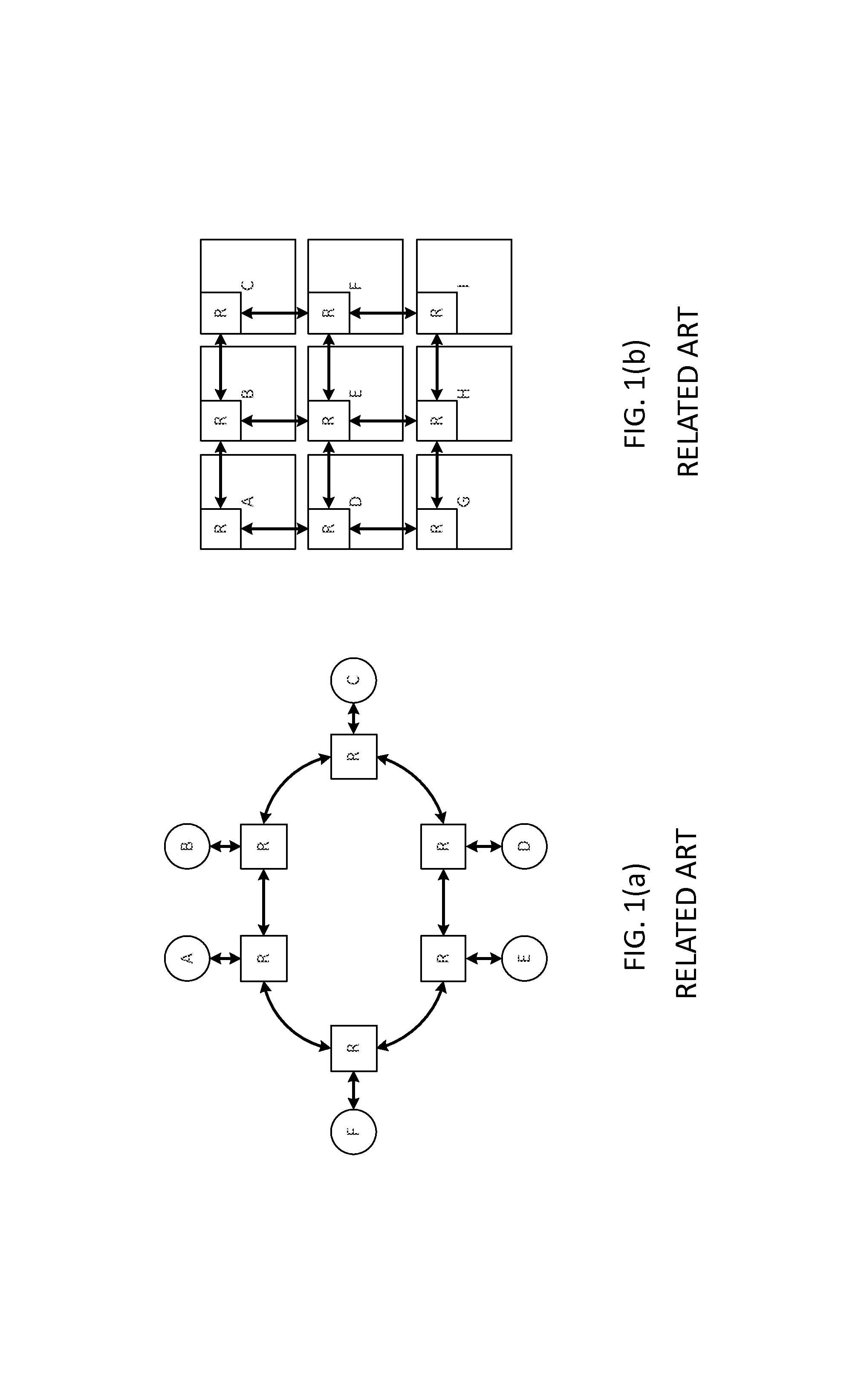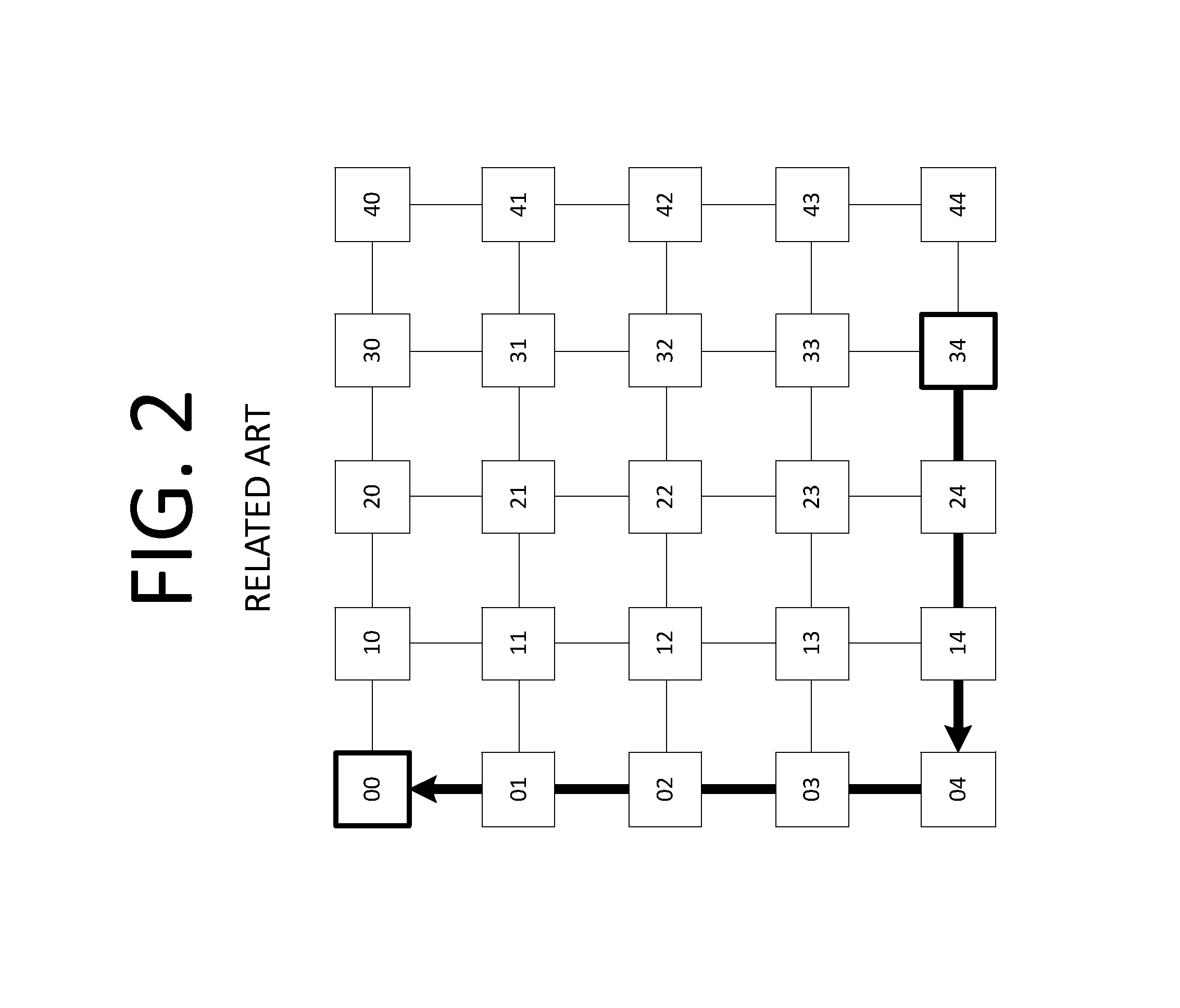Automatic construction of deadlock free interconnects
a deadlock-free, interconnect technology, applied in the direction of digital transmission, data switching networks, instruments, etc., can solve the problems of complex routing, low interconnect resource cost, and large number of components on the chip, so as to keep the cost of interconnect resources low
- Summary
- Abstract
- Description
- Claims
- Application Information
AI Technical Summary
Benefits of technology
Problems solved by technology
Method used
Image
Examples
Embodiment Construction
[0032]Complex dependencies introduced by applications running on large multi-core systems can be difficult to analyze manually to ensure deadlock free operation. Example embodiments described herein are based on the concept of automatically constructing deadlock free interconnect for a specified inter-block communication pattern in the system. An example process of the automatic deadlock free interconnect construction is also disclosed.
[0033]Applications running on multi-core systems often generate several sequences of inter-dependent messages between multiple blocks, wherein a message arriving at a block must generate another message for a different block, before it completes processing and releases the resources at the block for new messages. For a hypothetical example, consider a task running on block A which requests an operation to be performed on block B. On receiving the request message, block B completes part of the operation and sends partial results to a third block C whic...
PUM
 Login to View More
Login to View More Abstract
Description
Claims
Application Information
 Login to View More
Login to View More - R&D
- Intellectual Property
- Life Sciences
- Materials
- Tech Scout
- Unparalleled Data Quality
- Higher Quality Content
- 60% Fewer Hallucinations
Browse by: Latest US Patents, China's latest patents, Technical Efficacy Thesaurus, Application Domain, Technology Topic, Popular Technical Reports.
© 2025 PatSnap. All rights reserved.Legal|Privacy policy|Modern Slavery Act Transparency Statement|Sitemap|About US| Contact US: help@patsnap.com



